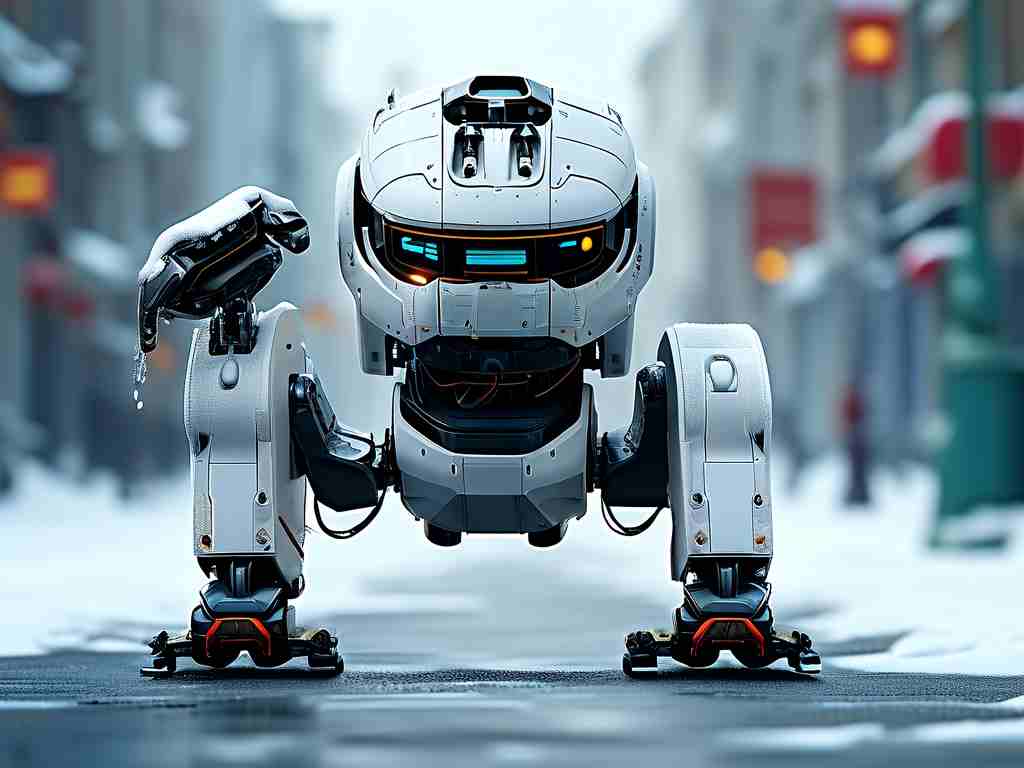Deicing robots represent a cutting-edge solution for removing ice buildup in harsh environments, enhancing safety and efficiency across industries like aviation, power transmission, and infrastructure maintenance. These autonomous systems rely on sophisticated technology principles to detect, target, and eliminate ice without human intervention. At their core, deicing robots integrate multiple components: sensors for real-time ice detection, mechanical actuators for precise removal, and heating or chemical systems for effective ice dissolution. This article delves into the underlying principles, exploring how these robots operate and their transformative impact on modern operations.

The foundation of deicing robot technology begins with advanced sensing mechanisms. Infrared cameras and ultrasonic sensors scan surfaces to identify ice thickness and location, often using algorithms to differentiate between frost, snow, and solid ice. For instance, infrared sensors measure temperature variations, as ice forms at specific thermal thresholds, while cameras employ image recognition to map icy patches. This data feeds into a central control unit, typically powered by microcontrollers or edge computing devices, which processes inputs to determine the optimal deicing strategy. Such real-time analysis ensures minimal energy waste and prevents damage to underlying structures. Moving to the mechanical aspect, robotic arms equipped with specialized tools execute the deicing process. Brushes or scrapers physically dislodge ice, while heating elements—such as resistive wires or hot air blowers—melt it directly. In some designs, chemical agents are sprayed to lower the freezing point, accelerating removal. The integration of servo motors allows for smooth, adaptive movements, enabling robots to navigate complex surfaces like aircraft wings or bridge cables with high precision.
Control algorithms form another critical principle, driving autonomous decision-making. Path planning software, often based on AI models like neural networks, calculates efficient routes to cover target areas without redundancy. For example, a robot might use SLAM (Simultaneous Localization and Mapping) technology to build a 3D map of its environment, adjusting its path in real-time to avoid obstacles. Energy management is equally vital; lithium-ion batteries or external power sources sustain operations, with power optimization algorithms minimizing consumption during extended missions. Safety protocols, such as emergency shutoffs and collision avoidance sensors, ensure reliability in extreme conditions. Practical applications illustrate these principles in action. At airports, deicing robots autonomously treat planes before takeoff, reducing delays and human exposure to hazardous chemicals. On power lines, they prevent ice-induced outages by systematically clearing accumulations, while in urban settings, they maintain bridges and roads to prevent accidents. This versatility stems from modular designs that allow customization for different environments.
Despite their advantages, challenges persist. High initial costs and maintenance requirements can limit adoption, while environmental factors like wind or temperature fluctuations affect sensor accuracy. However, ongoing innovations promise improvements, such as integrating renewable energy sources or enhancing AI for predictive deicing. In , the principles of deicing robot technology—combining sensing, actuation, and intelligent control—revolutionize ice management by boosting safety, efficiency, and sustainability. As research advances, these robots will play an increasingly vital role in mitigating climate-related risks, paving the way for smarter, autonomous solutions in a warming world.

